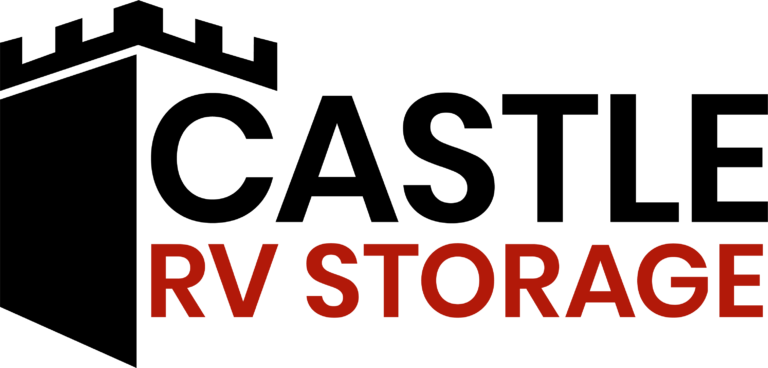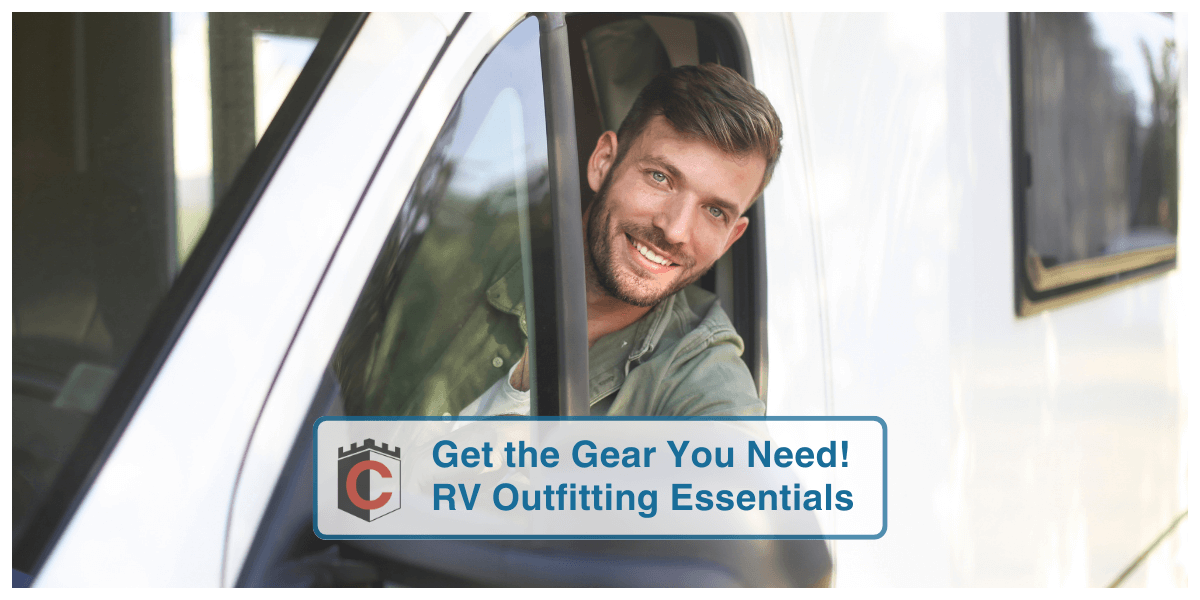This essential RV gear guide will help you go adventuring with confidence!
Getting the keys to your new RV is an exciting time! It can be highly tempting to immediately set out on your first trip. However, it’s well worth it to first get your RV properly outfitted with everything you need so you have the best time on the road.
RV Electric Essentials
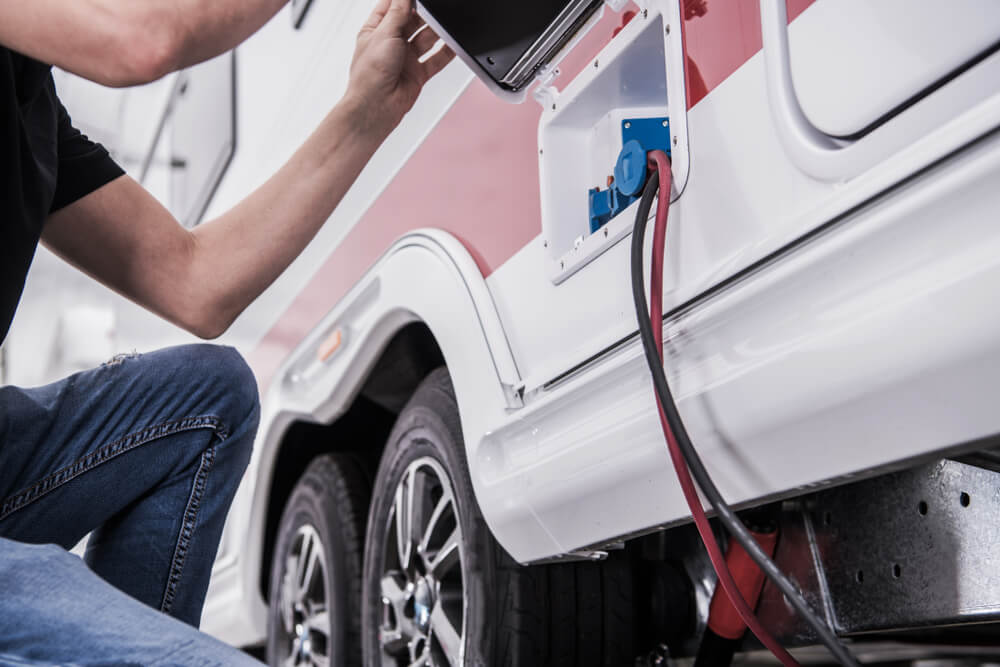
Prepare your RV to handle any power connection situation at camp. Hooking up your RV to a power supply is not the same as plugging in your smoothie blender. There is a LOT of amperage flowing in your rig! Most campers run on 50 AMPs or 30 AMPs and you need the appropriate extension cords for each. A home extension cord won’t be able to handle this much power, so leave it at home.
You may also be docked at a campsite that runs on a different level of power than what you need for your setup. Having adapters to convert your connection between 15, 30, and 50 AMPs is going to save you a big headache and ensure you can get your RV powered for your stay. Don’t forget to protect your RV and all your appliances with a surge protector. You don’t want a campsite power spike to ruin that blender! Cable locks will also protect your setup and make sure you stay connected.
RV Water Essentials

Having the right water hookup gear is going to make your adventure more enjoyable and help keep your RV water system clean. Campsite water quality can be a toss-up, so be prepared with a good RV water filtration system. Some RVs come with one, but if yours doesn’t you can find one that easily attaches. This is going to make sure that the water coming into your pipes and tank is clean so you don’t get sediment and particulate buildup in your system.
You’ll also need to get the right water hose and connections. You want a drinking water-safe hose! A 25 FT hose should be enough to get you to your site’s water spout, but having a second hose just in case you can’t reach is a great idea. A water pressure regulator is going to make sure your RV doesn’t get flooded, and a “Y” connector will give you the convenience of having a second functional hose without the wear and tear of constantly disconnecting the main hose.
RV Sewage Essentials
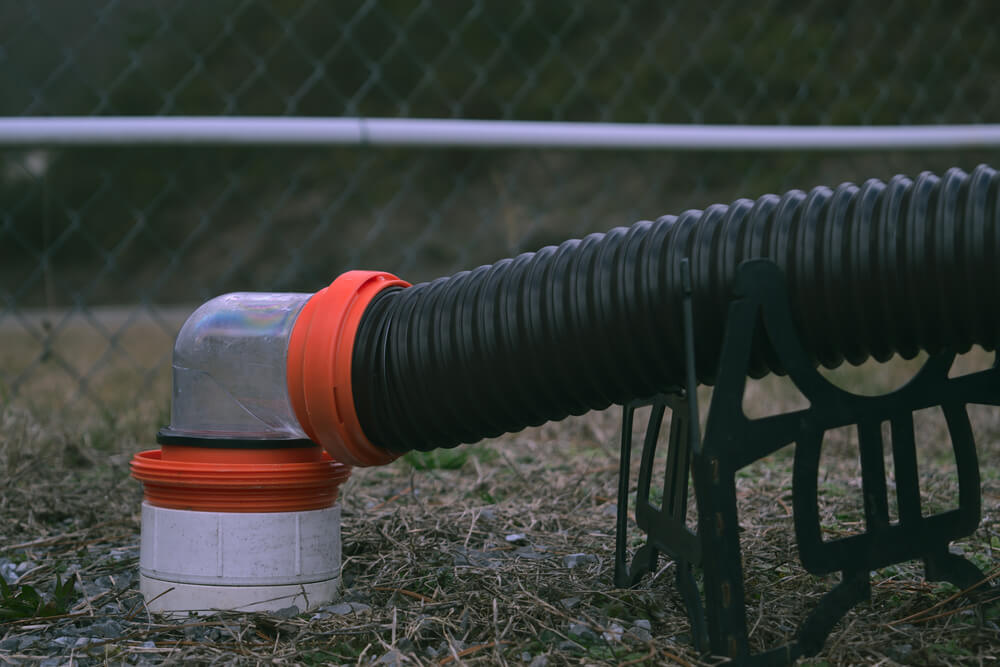
Thinking about waste management probably isn’t part of your adventure dreams, but it is so important if you want to have a pleasant time in your RV! You’ll need a sturdy, but flexible, sewage hose. A 15 FT hose is great, but two 10 FT hoses are better. They need to be propped up on sewage hose supports. Getting a collapsible hose support that is bigger on one end will help create a downward slope to encourage proper drainage.
You’ll also need two RV sewage hose connectors. One to connect the hose to the RV, and one 90-degree elbow to connect the hose to the sewer dump. Pro tip- both of these have clear options. Get them! This setup will help you make sure you know exactly what is going on when you flush your tanks so you can get them fully cleared and fix any blockages. Have a rubber donut sewage hose seal ready just in case your campsite has an unthreaded or extra-wide sewage connection.
Consider stocking a portable sewage disposal tank just in case your campsite only has power and water hookups. Make sure to have a separate, generic hose just for cleaning out your sewage hose after you drain it. Get it in a different color than your drinking water-safe hose so there is never any confusion! And finally, keep cleaning gloves and hand sanitizer with your flush kit.
RV Setup Essentials
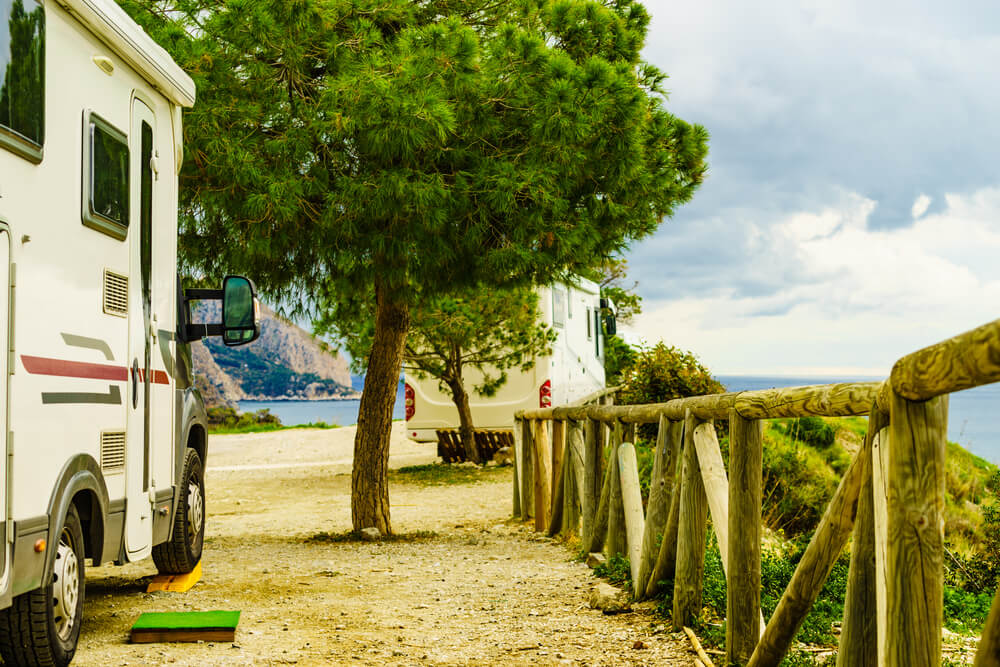
When you’re ready to set up camp, you need gear to ensure your trailer stays in place and level! It’s important to establish a level camp so your pipes drain, your refrigerator runs correctly, and you’re not constantly chasing after all the things rolling off your counters. A simple carpenter’s level can help you get your camper squared away both front to back and side to side. There are also camper levels that can keep you updated on any shifts so you can relevel when needed.
Wheel chocks are going to keep your RV from rolling out of place. Be sure to get enough to place them in front of and behind each wheel. Some RVs come with a hydraulic leveling system, but if yours doesn’t, you’ll also need leveling blocks. A stabilizer pad will help distribute weight so your jack stands don’t sink into soft ground.
RV Safety Essentials
The last thing you want is for your trip to be thwarted by an emergency you’re not prepared for. Having a special roadside and tool kit is going to save your vacation.
Your roadside kit needs an RV tire-suitable air compressor to keep your tires full and safe. Stock it up with an RV tire jack that can handle the weight of your rig, tire-changing accessories, road triangles and flares, and work gloves.
Pack a general hand tool kit with all the standards- wrenches, pliers, hex tools, a hammer, screwdrivers, flashlights, etc. And don’t forget the first aid kit and a fire extinguisher to keep your party safe!

Gear Recap: Equipment Mentioned Here
Get Your RV Adventure-Ready!
Outfitting your RV is a necessary process for planning your great escape to the open road. Getting set with this gear will keep you safe and comfortable and keep your camper healthy and ready to roll!
Visit the Castle RV Storage blog for all the best Colorado Camping, Travel, and RVing tips. Follow us on Facebook and Instagram to stay connected and share our love of the RV Travel Life!
